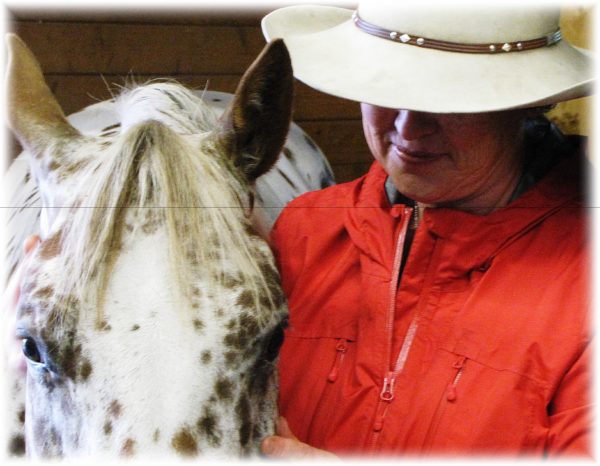Corners. The dictionary tells us that these are “the angles where two straight lines intersect”. It also says that to corner something is to “enclose whereby it is hard to escape”. Hmmm. Might I add one more?
Corners are ‘the key to improving our horses’.

Riding out in open country is important to the education of any safe horse. However, up to half the time I’m riding him, I also want to school in an area with four corners and four straight sides. I’m thinking a ‘cereal box’.
Now, when we start a green horse, he cannot make the shape of a cereal box. He does not have the body control or the balance. Riding this horse will be like riding a dirt bike on an oval track. In fact, as he increases pace, it will feel more and more like “Mr. Toad’s Wild Ride”. This is normal when a horse, whether young and green or older but unschooled, is learning.
If I am riding this horse, I must wait for him to relax and get more rhythmic. This means that he will become more accepting of where I steer him. He will not second guess me. Nor will he speed up and slow down as he goes around.
From the horse’s perspective, it’s a bit like turning his will over to a higher power. I will ask him to do big, bendy shapes with some circles, gentle serpentine bends, some tear drops…
These simple figures will be doable for him physically and mentally but they will still allow me to gain control of his body and mind. The challenge is in keeping a sustained speed, as a green horse is always compelled to speed up or slow down. He does not understand our concept of ‘cruise control’ and my job is to simply wait it out and guide him.
My goal is this: the horse learns to pair his brawn with my brain.
Once he learns to trust that I will not force him into position or cause him to tip over, he will relax even further. Now, I am faced with choices. I can ask him to slow down by pulling on his mouth. I can ask him to steer by pulling on his mouth. Or…
I can start asking him to go further into the corners of our cereal box to slow him down, to get him to lighten up and to take some responsibility for how he handles.
I can start asking him to keep his inside shoulder up on these increasingly bendy turns by making sure that I can always, always see his inside eyelashes. This happens just as soon as I remember to lift my inside hand. As soon as I do so, he lifts his inside shoulder. Now, without any force, his steering starts to happen with the outside rein!
Another goal, in addition to riding round circles and equally bendy turns, is to ride my horse around the perimeter of the area, using four straight lines and four corners. This is easier said than done.
Doing so requires a horse who is obedient, who stays between the reins, who listens to my inside leg, who adjusts his speed and balance to go into a turn and adjusts again, when coming out of it. Doing so means that I am riding an increasingly well schooled horse!
This is not news. Those of us who’ve shown rail horses have long known that the person who controls the corners in a big class is the person who controls the rail. This is the horse who appears to be going slower and more pleasantly than any of the other horses, whether or not that’s actually true.
Each lap of the ring, he has four excellent chances to reset and rebalance. We know that the horses and riders who can ‘use their corners’ are the ones who are in it to win it.
The next time you are training in an enclosed area, start gently requiring yourself and your horse to ride the entire cereal box. This won’t come overnight but once you are mindful, it will gradually, magically happen.
Doing this one little thing will see your horse greatly improved.
If you were riding Henry, above, would you be wanting to collect him more or would you ride him forward through his corners to have him achieve the same result? I’d love to hear your comments.
By the way, I may as well admit it. I’m trying to build my email list to offer books and get help with reading chapters and reviews in the future. You are my tribe! Rather than fill your face with pop-ups on the blog page, please, I’d be so grateful if you’d trust me with your email and subscribe with the red button. Thank you!

Hmm, second message i have read today about “turning over will”. And you hit the nail on the head about waiting for him to relax so he can trust you won’t force a position or put him off balance. Kids, horses, self reflection; funny how themes just keep going. Thank you for this very helpful imagery.
Tonya, you’re welcome. I think we keep getting hit over the head by the same message until we pay attention, don’t you?
This working and shaping the horse on the corners is key to my training and riding and yet, people seldom seem ready to take note of it. It’s a game changer, allowing us to shape our horses without argument, without reefing on their faces…
I hope you’ll try riding your corners mindfully and let us know how your horse gets on. Thanks for responding!